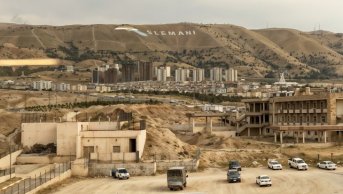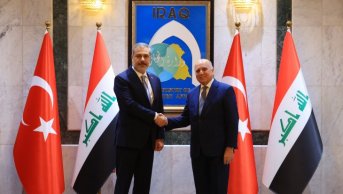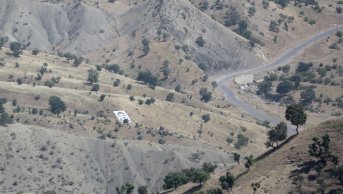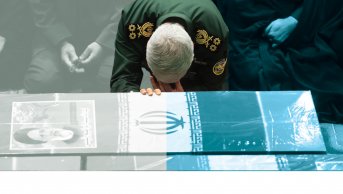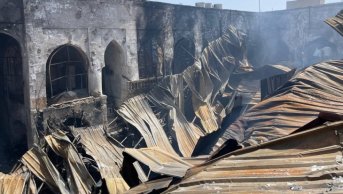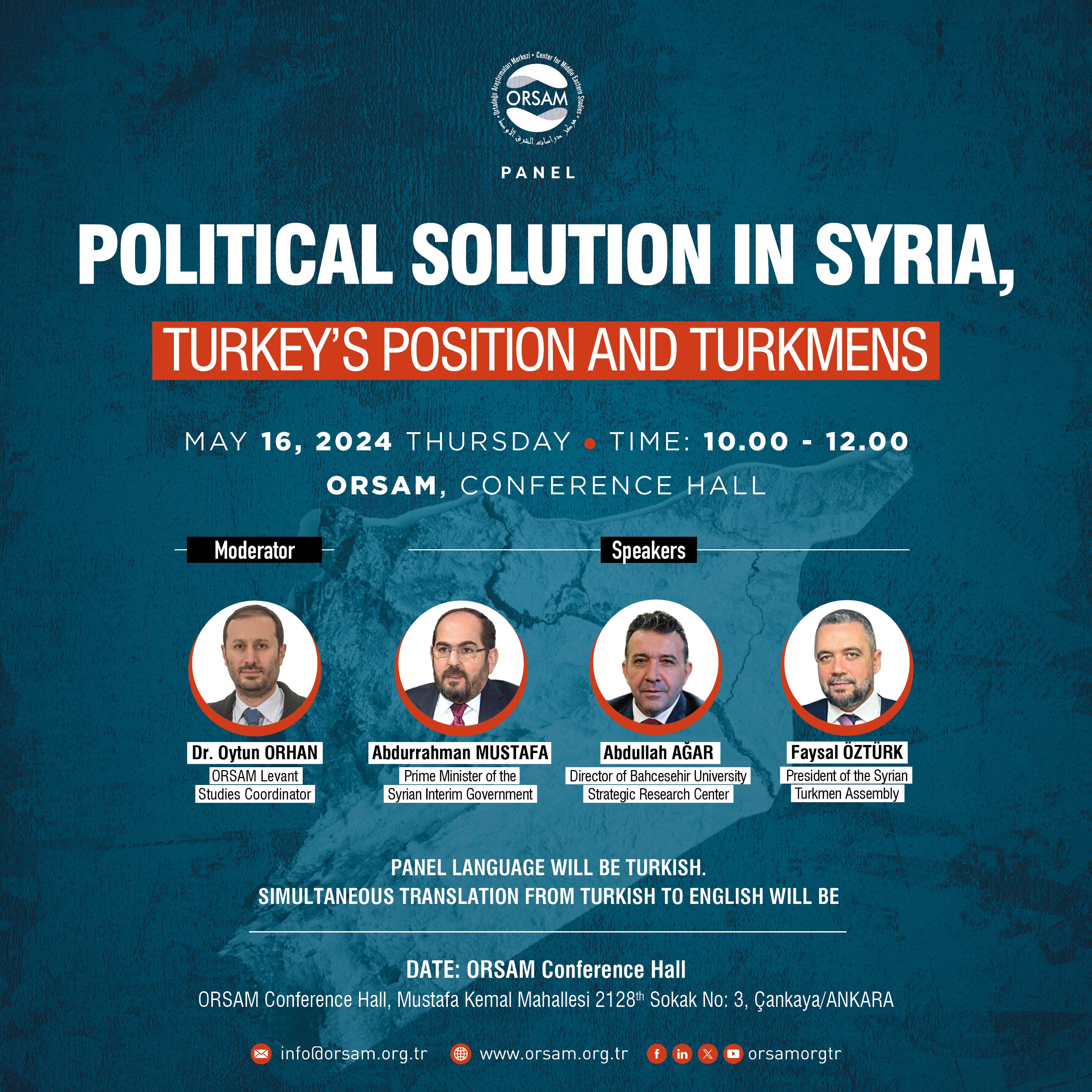Iraq in the 20th year of the occupation: What has changed?
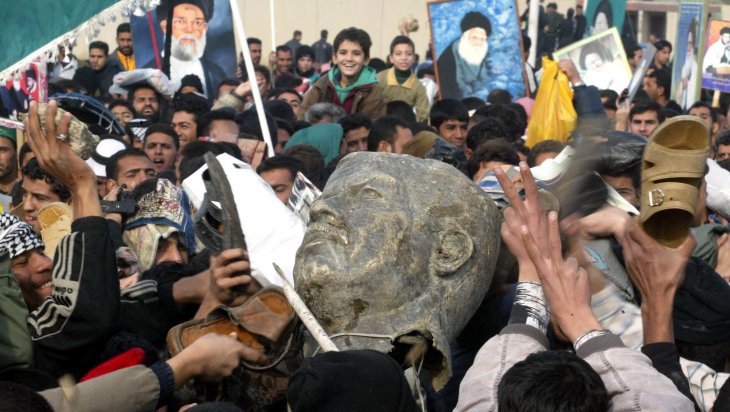
During one of my trips to Baghdad, I asked a tribal sheikh that I met, “What has changed in Iraq since the US invasion?”. I still cannot forget his response whenever I read something about Iraq: “Back then we had one Saddam, now we have thousands”.
It is better to mention here at the beginning what is needed to explain in the conclusion. Currently, Iraq is a country that is plagued by ethnic, religious, sectarian, and tribal divisions and is experiencing difficulties such as a lack of public services, corruption, unemployment, instability, and foreign intervention.
From 2003 to today
The United States’ operations against Iraq started on March 20, 2023, and transformed to an invasion on April 9 after Baghdad fell, thereby ushering in a new period for both Iraq and the region.
Even though the US invasion officially ended in 2011, as per the 2008 agreement between the US and Iraq, it is difficult to undo the effects of the invasion. While twenty years have passed since the invasion, we see that Iraq enters a new phase every 3 to 5 years.
How did the sectarian war begin?
Between 2003 and 2006, the people of Iraq, who had spent nearly the last 30 years under dictatorial rule, became "spectators" of the restructuring efforts in their country. Although three elections — two parliamentary and one provincial council —and a constitutional referendum were held during this period, ethnic, religious, sectarian, and even tribal militias became institutionalized in the newly established state structure, while the state itself became militarized.
In this sense, a state structure paralyzed by identity groups emerged. This state structure not only prevented the institutionalization of the state due to conflicts of interest among these groups but also spread to the social base. Indeed, the 2006 attack on the Shiite-revered Imam al-Askari Shrine in Samarra became a turning point for the "sectarian war" in Iraq.
“Ghettoization” based on sectarian identity
Between 2006 and 2008, Shiite and Sunni militia groups, who had previously resisted the US invasion of Iraq, began to fight with each other. This situation had negative consequences for the people, and "ghettoization" began almost everywhere based on ethnic and sectarian identities.
People were killed by militia groups simply because they were perceived to belong to a certain sect based on their names. The hatred and violence towards opposing identities reached such extreme levels that people started getting tattoos with their names or identifying marks on their bodies so that their families could identify their bodies.
80,000 people killed; brutality of US troops, trauma of the Iraqis
In fact, from 2006 until the official end of the US occupation in 2011, approximately 80,000 civilians lost their lives, according to the records. It is known that more than 66,000 civilians lost their lives only during the most intense period of sectarian warfare between 2006 and 2008. The years 2006 and 2007 were the years with the highest civilian casualties in the country. This number is even higher than the civilian loss during the intense war and the ISIS terrorism, which controlled one-third of the country between 2014 and 2017.
Moreover, these years are also remembered in history as the ones with the highest number of US military casualties in Iraq. Especially in 2007, it was the year when the US suffered the most casualties in Iraq, with 904 losses. Therefore, the "stick" of the occupation administration was not missing from the lives of the Iraqi people during this period. The memories of Abu Ghraib prison, in particular, still remain as one of the most entrenched traumas in Iraq, along with the atrocities committed by US soldiers.
Between 2006 and 2010, this process affected every sector of Iraq, as after the occupation, the Shiite majority took over the government, creating a period of "revenge" against the Sunnis. The Sunnis, driven by the ambition of losing power, aimed to turn the country, in which they had fallen from their elite status, into a ruin. This created a significant power vacuum in the country, allowing terrorist groups, especially al-Qaeda, to gain ground. Moreover, Iraq became a playing field for regional powers such as Iran, Saudi Arabia, and others.
Who was granted sovereignty?
While sectarian wars were raging in Iraq, an agreement on the transfer of sovereignty was signed between the US and the Iraqi government in 2008, and as of the end of 2011, the mission of US combat troops in Iraq was completed. This led Iraqis to believe that they had regained control of their own government.
After the 2010 elections in Iraq, Nouri al-Maliki became prime minister for the second time and developed close relations with Iran, taking advantage of the power vacuum created by the withdrawal of US combat troops. During this period, there were even comments that Iran was the "real owner" of Iraq.
In 2011, the wave of protests that swept across the entire Arab world also affected Iraq, and Nouri al-Maliki’s oppression of Sunni Arabs led to protest demonstrations in Sunni majority provinces, revealing renewed sectarian tensions. As the scars of the intense sectarian conflict were still fresh, Nouri al-Maliki's attempts to suppress the protests with harsh measures, even using tanks to enter universities, fueled concerns among Sunnis that a "new dictator" was emerging.
During his first term as prime minister between 2006 and 2010, Nouri al-Maliki was also known for the clashes between government forces and the militia group Mehdi Army, which was affiliated with Muqtada al-Sadr, one of Iraq's prominent Shiite leaders known for his resistance against the US.
In addition to the transition pains that the country was experiencing, the spread of popular protests across the Middle East and Nouri al-Maliki's attempts to suppress these protests with harsh measures resulted in the emergence of ISIS (Islamic State of Iraq and Syria), which became a global terrorist organization and a worldwide "phenomenon."
What ISIS did in Iraq
Although ISIS was born from the ashes of al-Qaeda, their actions in Syria and especially in Iraq led to one of the most significant periods in world political history, perhaps short but with a significant impact.
Between 2014 and 2017, ISIS declared a "caliphate state" that included parts of Iraq and Syria, and their practices left wounds in human history that will never be healed. Especially in Iraq, not only were the gains that had been achieved lost, but the social, political, economic, and security structure of the country was completely devastated. Today, the country is still struggling to recover. It is very difficult to say that political stability has been achieved after ISIS.
Government Problem
The Adil Abdul Mahdi government, which was established after the 2018 elections, could only stay in office for one year due to the October 2019 protests in the country due to reasons such as corruption, unemployment, and disruptions in public services. These protests led to the first-ever resignation of a prime minister in the country.
After long discussions, the interim government established under the prime minister, Mustafa al-Kadhimi, led the country to the early elections, which were the first early elections after the occupation. After the elections on October 10, 2021 — the last parliamentary elections held in Iraq — the government was formed by Mohammed Shia es-Sudani after more than a year. In this sense, it would not be wrong to say that the political balance in Iraq has almost completely disappeared. That is because the Shiite militias’ armed intervention attempts, protests, demonstrations, and even attempts at raiding the Parliament, the Presidential Palace, and the Iraqi Federal Supreme Court in a way to target the legislative, executive, and judicial powers as if they were making a "coup" left their marks in memory.
Where is Iraq today?
The nature of the administration and politics created by the US in Iraq are based on ethnic and sectarian foundations. In addition, the unaccustomed orientation of the Iraqi people, which had been ruled by powerful central authorities for decades, to a practice such as federalism also caused their social identities to be expressed in the smallest units. Individuals reveal their tribal ties, geographical affiliation, and socially conservative identities rather than being Iraqi. This situation is one of the biggest obstacles that makes Iraq, which was ruled by authoritarian and strong central structures for decades until the US invasion, unable to establish order.
In this sense, it is possible to say that Iraqi society has internalized a strong, authoritarian regime. This internal situation, when considered together with the federal structure after the US invasion, revealed the "country of local kingdoms". In addition to ethnic, religious or sectarian sub-identities that became stronger after the US occupation, side factors such as tribalism and regionalism brought localization along with the federal structure. In other words, each group has become the dominant power in the region in which it is strong.
At this point, the US occupation has turned Iraq into a state of chaos. The schism in the country is not only between ethnic and sectarian groups but also within these groups. From this point of view, it would not be wrong to say that the joint governance culture in Iraq is almost over. Although "national unity governments" have been established since the US occupation, which are thought to ensure the representation of all segments in Iraq and include all segments that have the right to enter the parliament, consensus and joint governance are far from being a common understanding. All segments use the offices they have obtained for their group interests. In this sense, it is difficult to talk about a common state identity.
The US and Iranian Influence
The USA and Iran are the main actors in every process in Iraq. Saudi Arabia and the Gulf countries are also trying to take a position in Iraq on the basis of sectarianism. On the other hand, China and Russia are positioned in Iraq in terms of the global economy and energy. Turkiye, on the other hand, strives to be a balanced and stabilizing factor. Still, it is clear that the US and Iran are directing politics in the country so far.
However, this situation has dragged the institutionalization of the state towards collapse. It is difficult to provide even the simplest public services. For example, according to United Nations data, 7.3 million people in Iraq out of a population of 42 million have trouble accessing health services. According to the World Health Organization (WHO), Iraq is the country that allocates the least amount of resources among the countries in its region in terms of health expenditures per capita, which are 154 dollars. There is no health insurance system in Iraq. Hospitals, hospital capacities, and access to medicine are difficult problems. Therefore, most Iraqis prefer countries such as Turkiye, Iran, Azerbaijan, and India for the treatment of important diseases.
Water and Electricity Problems in Iraq
On the other hand, according to UN data, approximately 7 million people in Iraq, or one sixth of the country's population, have problems accessing clean water. It is feared that this number could reach 13 million by 2030. In addition to water scarcity, problems such as water pollution and desertification have reached a serious level.
The availability of electricity in Iraq varies depending on the province, with a peak of 20 hours of supply per day. In this sense, there is almost no region where electricity is available all day. In some provinces, this time can even be less than 10 hours. Neighborhood generators or private generators provided electricity during the remaining hours.
On the other hand, education is one of the areas that has suffered the most from occupation, war, and violence. According to UN data, about one-fifth of Iraqis are illiterate. While this rate is 24 percent for women, it is around 11 percent for men. In this sense, it is seen that occupation and war have affected women more deeply.
Women in Iraq
Although women are kept in the background in society, there is positive discrimination for them to participate in politics after the occupation. According to the Iraqi Constitution, one of every four deputies must be a woman. In other words, a quota of 25 percent was provided for women. This quota is 30 percent in the Iraqi Kurdistan Regional Government. The number of men and women in the Iraqi population is almost equal.
However, it is not possible to say that there is the same equality in society. As a matter of fact, Iraqi laws allow multiple marriages, subject to the consent of the other spouse or spouses. However, considering that almost one out of every 5 women in Iraqi society is subjected to violence, it is difficult to say that the man who demands a second or more wife can handle the pressure.
According to 2022 data, 1.2 million people in Iraq are still IDPs due to wars and fighting in the country, and about 200 thousand people live in camps.
About 2.5 million people are in need of humanitarian aid. According to World Bank data, the poverty rate in the country is about 25 percent. About 19 percent of the population in the country lives below the poverty line.
Unemployment in Iraq
Unemployment in Iraq is also at serious levels. Since the private sector in Iraq is undeveloped, approximately 60 percent of the workforce is in the public sector. That's why people see government posts as a means of employment. As a matter of fact, this is one of the foundations of the struggle between the factions. The position to be obtained in the state is seen as a job opportunity and a guarantee of the continuation of income for the supporters of the group or the tribe members. Corruption, factionalism, and nepotism in the state structure in Iraq are dragging the country to a dead end.
Iraq is the country with the lowest participation of women and youth in the workforce. According to UN data, more than half of Iraq's population is under 25. After 2003, nearly 2.5 million women were widowed due to war, terrorism, and violence. More than 55 percent of women who can participate in the labor force are unemployed. However, according to UN data, only 14 percent of women can participate in the workforce, while about 70 percent of women who can participate in the workforce can work in agriculture.
It is almost as if Iraq has an army of unemployed people. Forty percent of the youth, which constitutes more than seventy percent of the population, are unemployed.
Iraq’s economy is in disarray
The US occupation and the ongoing war have destroyed the country’s economy.
From 2009 on, the Iraqi Dinar lost 1,500 percent of its value in comparison to other foreign currencies. Even though Iraq started implementing the fixed exchange rate system as of the first months of 2023, the US Federal Reserve’s news sanctions against some banks caused approximately a thirty percent value loss of the Iraqi Dinar against the US dollar.
According to some calculations, it is estimated that 450 billion dollars of public funds were lost. That is the reason why there is no national investment in restructuring in Iraq.
According to some statistics, nearly 70% of buildings in Iraq were constructed 40 years ago. There are very few social spaces available, so people prefer social activities such as eating out, smoking hookah, chatting over tea in teahouses, and playing dominoes. During periods of increased violence, these activities come to a standstill, and people almost close themselves off in their homes. In this sense, it would not be wrong to say that the devastation caused by the war in Iraq manifests itself in almost every aspect, from politics to the economy, from health to cultural activities.
A considerable portion of the population made up of disadvantaged groups such as the Turkmen, various minority groups, and people with disabilities who do not have political, military, social or economic power are also negatively affected by developments in the country, subjected to forced identity and displacement policies, and forced to migrate within and outside the country.
As of 2023, while the 20th anniversary of the US invasion of Iraq has passed, it is difficult to say that the country has been able to establish a stable order. The damage caused by the US invasion to the country's sociological structure, government, culture, and economy and the impact it has had will be irreparable for many years to come. The US invasion clearly caused a breakdown in society.
Today, perhaps the most prominent feature of Iraqi society is insecurity. The insecurity in the Iraqi population can be traced from individuals to the highest levels of society and the state. In this sense, it would not be wrong to say that the Iraqi people are in a state of "social exhaustion syndrome". It is not going to be easy for Iraq to overcome this syndrome in the short term.
This article was published on Fikir Turu on March 20, 2023, with the title "İşgalin 20. Yılında Irak: Ne Değişti?”

